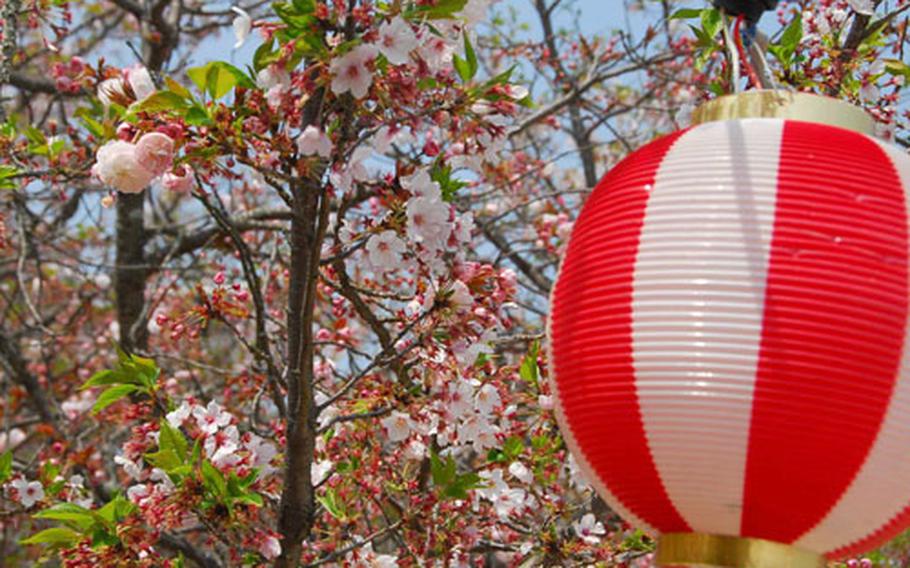
The many cherry trees around Karatsu Castle blossom in the springtime. (Travis J. Tritten / S&S)
In Karatsu, the tuna is so fresh it’s still swimming.
The great silver fish are corralled in large tanks on the floor of the Osakana-mura market, where coolers and tubs of ice hold a plethora of Japanese sea life.
The bounty is pulled each day from the waters around Karatsu city, an ancient port and feudal seat in the north of Japan’s Saga Prefecture.
The city is among the many sleepy municipalities that dot the green mountains of Saga, an area of farms and forest that seems a world away from the rush of the country’s neon hubs.
In this part of Japan, history is long and the day moves slow.
Karatsu’s fish market and feudal castle make a perfect excuse to take in the slower pace over a meandering afternoon drive.
Osakana-mura, which means “fish town” in English, sits along the once primary route from Sasebo and Nagasaki to the larger northern cities of Fukuoka and Kitakyushu.
Now, expressways to the east have drained traffic from the two-lane highways that run through the countryside around Imari and Karatsu.
The roads attract day-tripping tourists and commuters with no real schedule.
Driving the back routes is for those who have time to kill, have an eye out for new discoveries or just enjoy the trip as much as the destination.
Patient travelers are paid off at the Karatsu fish market, which is a trove of reasonably priced seafood and a tribute to the country’s love of all things that come from the sea.
Square slabs of whale blubber, drinkable mekabu seaweed, buckets of shellfish and smoked mirinboshi fish are sold. Ready-made sashimi and sushi plates are also available.
Upstairs visitors can dine at the Osakana-mura restaurant, where fresh market offerings are prepared as part of a house meal set of sashimi, vegetables, soup and steamed dumplings.
Meanwhile, the city’s other famous landmark sits farther down the road in the city center.
From its hill, the Karatsu Castle gazes down on the hazy port. The Edo Period structure has overseen the coming and going of the local fishing fleet and trade ships for 400 years.
Karatsu’s name is a reference to its ancient trade ties with the Korean peninsula and China.
The castle was built at the dawn of Japan’s pre-modern period, a time of strong feudal control, stability and peace, and is among the castles that survived Japan’s march toward modernity during the Meiji Period in the late 1800s.
Today, Karatsu Castle is a towering and majestic museum ringed with cherry trees and wisteria. A stone staircase winds up the side of the castle mount and through trees and flowers, which bloom in the springtime.
The museum winds around five castle stories and holds displays of finely detailed feudal armor and weaponry. At the uppermost floor, visitors can take in a commanding 360-degree view of the Karatsu port below.
The city stretches out into the ocean on a finger of land. It appears little different than the museum version of the city, an ancient port made famous by trade hundreds of years ago.
The “ocean path” to Asia sparkles below and the day seems to slow. Fishing boats bob at docks in the distance.
As the city tourist board says, time flows pleasantly in Karatsu.